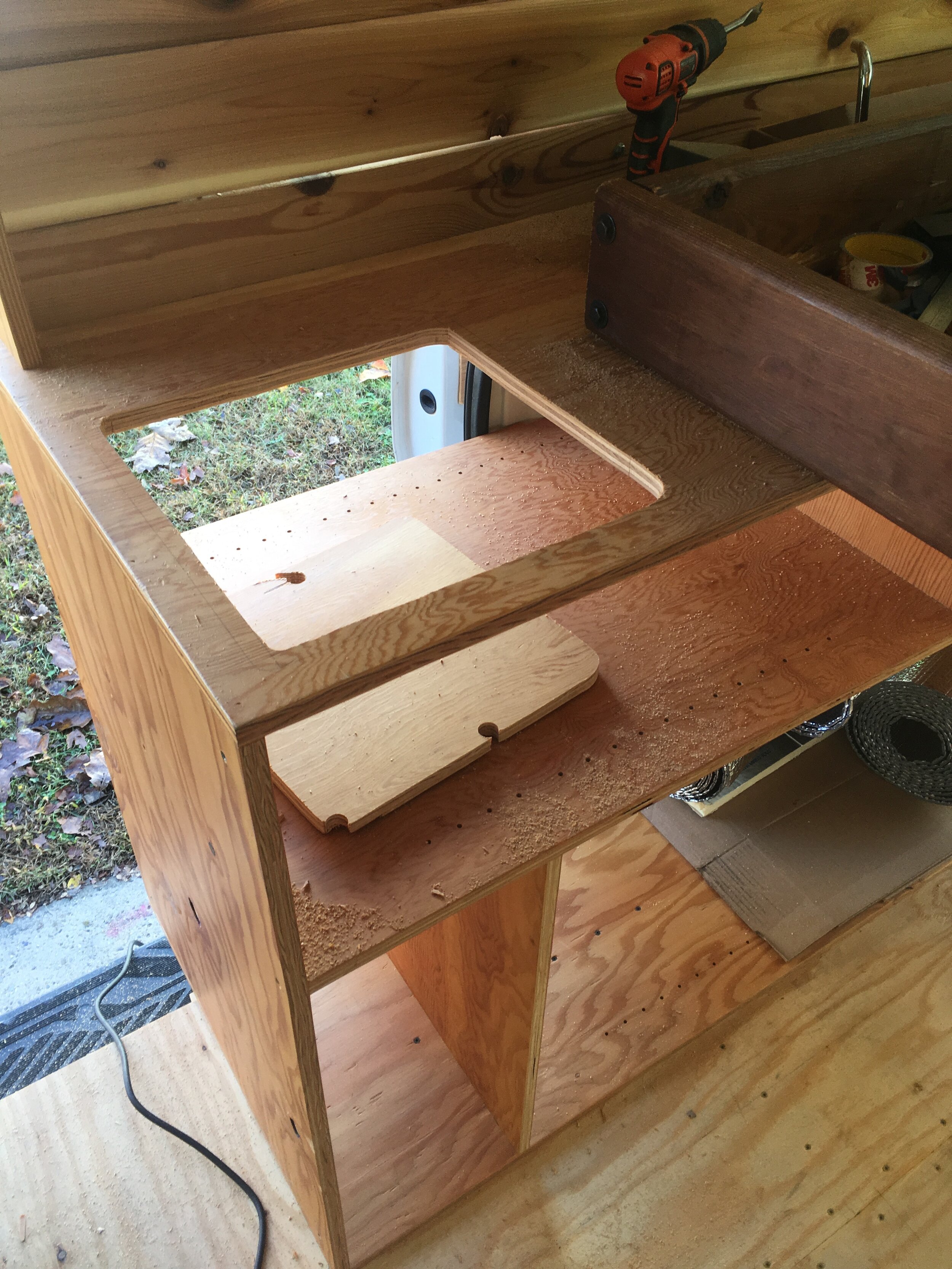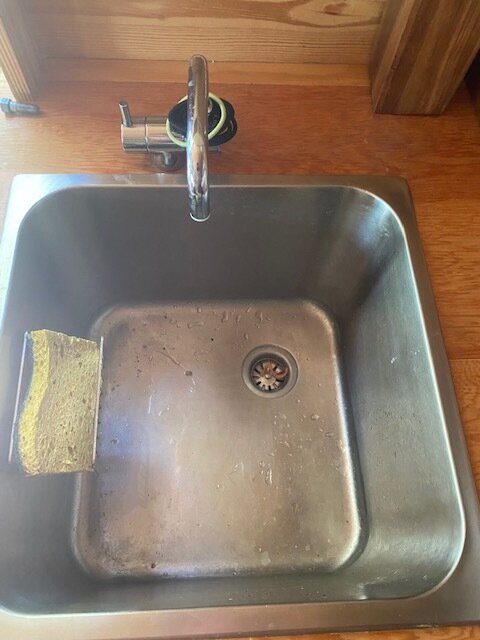our water system
Meet our water system:
It’s simple, and we’re really happy with it.
How does it work?
In the back, we’ve got two 5-gallon tanks of drinking water. On top of our van is our 5-gallon solar shower. But what I want to talk about in detail is what we’ve got going on under the sink. There’s a 7-gallon tank for clean water and a 5-gallon one for gray water. We use a Whale foot pump to bring the water up. It’s a minor pain in the ass (nothing new for anyone who’s washed their hands at the McMurdo galley sink though!) but the trade-off is that we can completely control how much water we use. If we had an electric pump and could just leave the water running, we’d use a lot more. (I recently talked to an RVer with a 60-gallon system, and he said he runs through it in three days. It would take us twice as long to use that much water!)
Our foot pump also doubles as a musical instrument.
How’s your water system put together?
Brooke asks: What was the first step?
Doug says: Putting in the sink for sure. I wanted a deep-basin sink that I think’s been working well so far. And then just bought a faucet.
Doug continues: Then I got the foot pump, and then sized the jugs and modified the caps.
Brooke asks: How did you modify them?
Doug says: The blue one had a spigot that I took off and replaced with a half-inch female garden hose quick-connect coupling. There was already a hole there, so I was able to get a lot of the threads into the cap, and I super-glued around the opening. I used half-inch braided vinyl tubing to connect that to the foot pump. The male end of the quick-connect goes on the end of the tubing so they fit together. Inside the blue tank is the tube from an Osprey water bladder. It’s attached to the cover with epoxy. We had an issue where it would float to the top of the tank, so we anchored it with a pretty rock.
Brooke adds: And then there’s another hose that runs from the foot pump to the faucet.
Doug says: Mmm-hmm. Attached to the faucet, there’s a barb — a ribbed brass piece that screws on — and that hose pushes onto the barb.
For the wastewater tank, I drilled a hole in the cap and put in a PVC coupling that I rigged up for the braided hosing.
Doug continues: The vinyl tubing comes off of the blue water tank and goes to the foot pump where it’s attached with push-on couplings.
Brooke desires clarification: Is that what it sounds like? It’s basically just as easy as pushing the tubing in?
Doug nods wisely: Mmm-hmm. The pump creates a vacuum and the outtake goes to the faucet. The instruction manual that came with the foot pump was really helpful.
Sidebar: What kind of tubing should you use?
Definitely don’t use a garden hose for drinking water — they’re full of chemicals. (Isn’t that cool, that you spray them on your lawn so they can leach into the soil and the groundwater!) Copper tubing is heavy, inflexible, and requires soldering to install. Pex tubing tends to be the gold standard because it’s flexible and durable, but you need expensive tools to install it. However, you should limit the amount of time it’s in sunlight; direct exposure to UV light can degrade the materials and cause it to leach potentially carcinogenic chemicals into your drinking water.
As for the gray water tank, it works on simple gravity. We try to empty it every couple of days. Also, hot tip, try to keep food particles from going into your gray water tank, unless you like the idea of driving around with a 5-gallon petri dish. Of course, you should practice Leave No Trace, so if you’re camping at a place where you don’t want to attract wildlife, we recommend keeping a jar for dumping food scraps until you can dispose of them properly.
Why is your drinking water separate?
When we first got started, we were going to try to use just the 7-gallon tank for drinking and washing water. How naïve we were… It just wasn’t enough. So we bought a 5-gallon jug of drinking water, named him Juggy, and stuck him in the back. I admit, it was a pain in the ass at first to fill our Nalgenes with a 5-gallon jug, but now we’re both really strong. We loved Juggy so much that we bought another one and called her Mrs. Juggy. This will do for now, but we’re brainstorming different ways we can store these badboys so they’re not just floating around the back of our van.
Where do you get water?
Friends!
Town/state/national parks usually have spigots
Grocery stores/Wal-Mart have those machines where you can fill a 5-gallon jug for $2-3
Campgrounds will charge you anywhere from $5-10 to fill up your tanks. They usually deal with RVs that hold 75-100 gallons of water, so for a system like ours that only holds 23 gallons, you can try to haggle.
Tell me about your shower!
That, my darlings, is a whole other post. Tune in next week!








